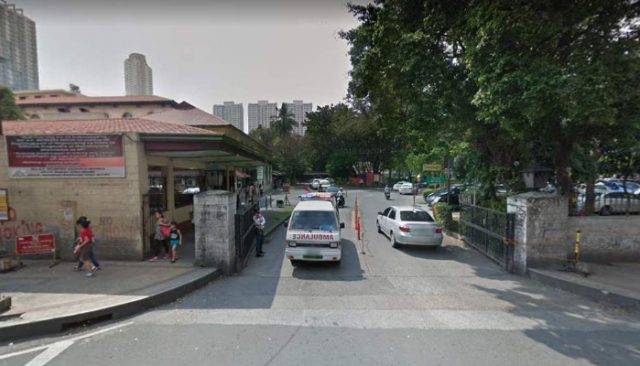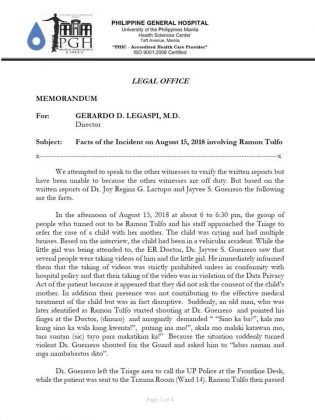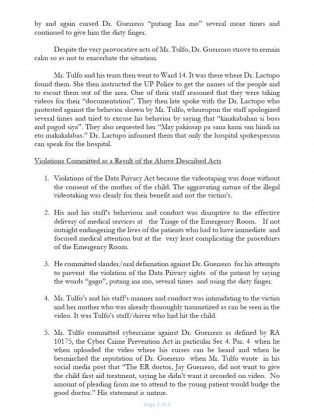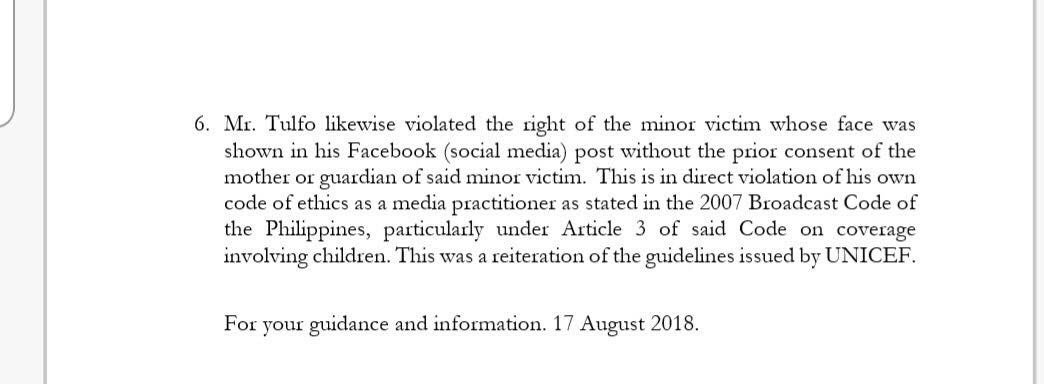Broadcast host Ramon Tulfo walked into a substitute emergency room of Philippine General Hospital on Aug. 15, 2018 with his staff and a weeping girl who was hit by his driver. He walked away angry and posted a video on Facebook purportedly showing medical staff who were indifferent to the patient.
Tulfo named a doctor, Jay Guerrero, and accused him of refusing “to give the child first aid treatment, saying he didn’t want it recorded on video.”
“No amount of pleading from me to attend to the young patient would budge the good doctor,” Tulfo wrote on Facebook as caption to the video. He also ranted on Twitter, making a sweeping accusation against practitioners at the top state-funded hospital.
“Most interns and resident doctors at the Philippine General Hospital (PGH) are haughty (matapobre). They don’t care much about their poor patients as all they’re interested in is learning medical skills. Why? They are rich kids who graduated from UP, premiere govt school. Shame!”
His followers on social media backed up his observations and decried hospitals’ treatment of poor patient.
Tulfo said he would file charges against the medical practitioners involved.

For PGH, it was not the whole picture.
The hospital maintained that Tulfo and his entourage were “disruptive” to the work of emergency room staff.
“His and his staff’s behavior and conduct was disruptive to the effective delivery of medical services at the Triage of the emergency room,” PGH’s lawyers state in a memorandum to hospital administrators urging them to take legal action.
The PGH at the University of the Philippines Manila campus listed six possible violations that Tulfo and his team could be liable of, namely the videotaping of a minor without consent of her parents and slander or oral defamation against the physician he was seen cursing at. The lawyers also said Tulfo could have violated the Data Privacy Act and the Cybercrime Prevention Act of 2012.
The patient Tulfo took to the hospital was a six-year-old girl whom his driver hit in Navotas while his convoy were en route to Ortigas.
Tulfo and his staff rushed the injured child, accompanied by her mother, to the PGH emergency room on August 15.
When he did not find the hospital staff’s attention satisfactory, Tulfo allegedly cursed at the physician on-duty, identified as Dr. Jayvee Guerrero, who told him to put away the camera. But Tulfo’s staff managed to record the episode and shared it on social media.
Perspective: Hospital protocols
Reacting to the issue, some social media users explained how the triage system works and what patients have to undergo before being treated.
“Pagdating ng isang pasyente sa ER, sa triage dumederetso. Inaalam kung kritikal ang lagay at inuuna ang mga malalang kondisyon. Alam ng mga doktor ang tunay na emergency sa hindi. At mukhang hindi naman agaw-buhay ang pasyente,” one user explained.
Another wrote:
“A triage officer is someone who facilitates the assessment of the condition of patients, and bring them to the department where they can get their treatment… And in PGH, the triage is always overflowing with incoming patients. Literally pouring in from Cavite, Batangas, even as far as Neuva Ecija. Thus, prioritising which patient must be assessed first is essential.”
It was also pointed out that PGH has an anti-recording policy to protect doctors as well as patients.
Perspective: Why take the child to PGH?
There were others who suggested that Tulfo and his staff could have taken the child to hospitals that were nearer to Navotas than PGH.
“So sa Navotas nakasagasa si Tulfo tapos sa PGH niya dinala… wala bang mas malapit na ospital??? Akala ko ba gusto niya first aid???” comments one.
In medicine, triage refers to “the methods used to assess patients’ severity of injury or illness within a short time after their arrival, assign priorities, and transfer each patient to the appropriate place for treatment.”
This procedure was done for the effective delivery of medical services to all patients brought or rushed there.













